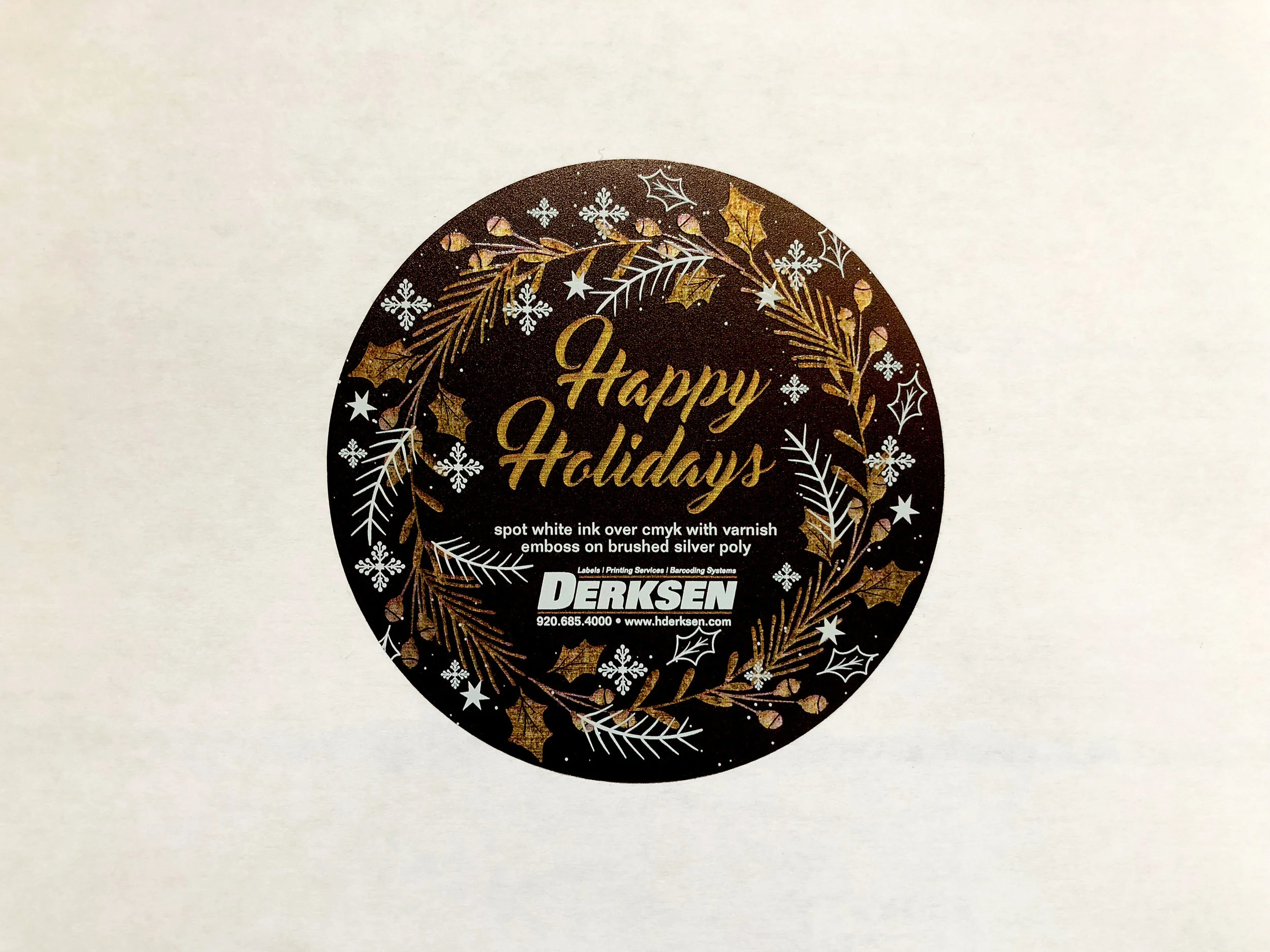What Makes an Eye-Catching Label?
VARNISHES, METALLIC INKS AND FOIL PRINTING
Today, we’re setting out to answer a rather elusive question: what makes an eye-catching label? Now, this question is not one that is easily answered and we won’t pretend that we can cover this topic in its entirety in this post. However, one of the easiest ways to make your label pop is with the addition of light-catching, and as an extension, eye-catching details. Today, we’ll talk about varnishes, metallic inks and foil printing. These techniques each present an opportunity to add visual interest to your label designs and make your label stand out.
LAMINATES, VARNISHES, AND UV COATINGS
Laminates, varnishes, and UV coatings all function similarly. They offer protective barriers against friction and moisture, ensuring artwork is preserved and can be applied to accentuate parts or all of a label design. The combination of matte and gloss varnish, laminate, or UV coating can accentuate certain parts of your label artwork or make text pop. You may choose to finish your entire label with a gloss finish, which gives it a shiny quality, or you can use a matte finish to give the coloring and artwork on your label a certain aesthetic appeal, while retaining the utilitarian protection of the coating.
METALLIC INKS
Metallic inks can be wonderful tools to bring your label artwork to the next level. These inks are infused with small metallic particles that, when dry, rise to the surface of the ink and reflect light, giving off a shine that has the ability to heighten the appeal of parts of your label and highlight your label artwork on shelves. Metallic inks generally work well in combination with a varnish, as the nature of the ink is susceptible to rubbing, the varnish gives an extra protective coating and ensures the ink says put and is even accentuated more heavily.
FOIL PRINTING
There are two types of routes to choose when looking to incorporate foil into your label design: the hot stamp process and the cold foil process. The hot stamp process utilizes a metal stamp of the foil design. This stamp is heated and presses the sheet of foil into the substrate so that when pressure is applied to the paper, the foil gets affixed to its surface. Aside from just imprinting the foil onto the sheet, the stamping process creates a tactile finish that is distinct to this process. This foiling process creates the truest metallic look and most intricate feel. It has a high-quality look and can give a luxurious look to packaging and labeling.
Cold foiling uses a flexographic printing process. Foil is pressed through a roller onto the substrate and then it is cured by UV light. This process is well-suited to print jobs that require a high degree of accuracy, like affixing foil to small text or small graphics. With cold foil, you’ll also get a wide range of colors because other inks can be applied after the foil is on the paper, increasing the range of options for the look of the foil and the intricacy of the design.
The choice between varnishes, metallic inks and foil printing will depend upon your needs, the nature of your product, and the artwork for your label. You can get in touch with the Derksen Co. team to find out more about what makes an eye-catching label and how you could incorporate specialty effects into your label design. You can call us at (920) 685-4000, or visit our contact us page to send us a message.
